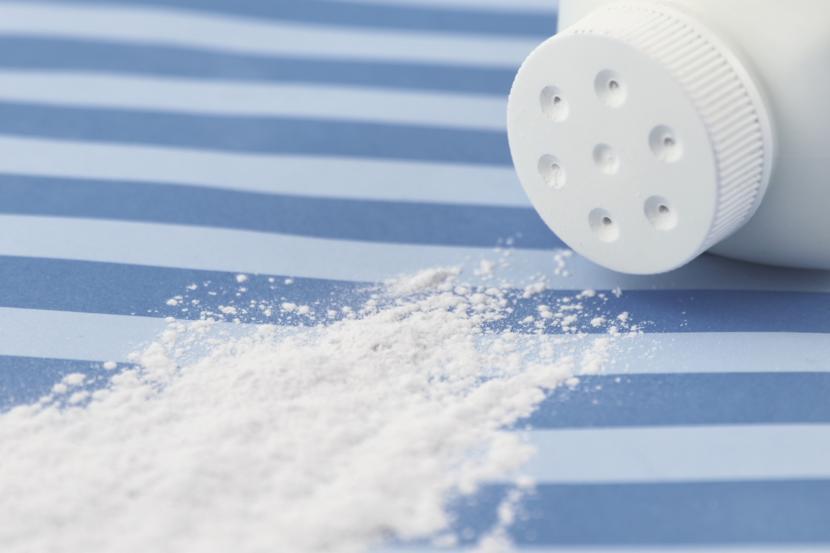Talcum Powder and Ovarian Cancer: The Facts

When watching TV, it’s hard not to notice those commercials urging women to “call this number if…!” It’s difficult to know if these are based on fact or are just alarmist reactions to poorly researched issues. TV commercials are hardly the best place to get health information. Yet this is the first place many had heard of talc and its potential to increase the risk of ovarian cancer. So, what are the facts?
Overview
Ovarian cancer is the fifth leading cause of cancer related deaths, and the most common cause of gynecological cancer deaths in the United States according to UpToDate. Unfortunately, it is often diagnosed late due to lack of symptoms. This means that the disease progresses without the patient having any signs or symptoms of it. By the time it is diagnosed, interventions usually have limited success. Women who present to their healthcare provider with acute symptoms often already have progressed ovarian cancer.
What’s the evidence?
There are many contributing factors to ovarian cancer including genetics. It is important to remember that regardless of the what the evidence about talc powder says, there are many factors that contribute to ovarian cancer, and many women who have never used talc will develop it.
In the past few years information has been made available regarding the potential of genital use of talc powder in causing ovarian cancer. One article describes how retrospective studies have shown the link between talc powder and ovarian cancer. They also explain that laboratory-based human cellular studies reveal that talc powder on ovarian tissue can result in an inflammatory response associated with cancer. The link between talc powder and ovarian cancer dates back to the 1960s. However, a link between talc users and ovarian cancer is hardly proof that it is the cause of the cancer. Proving that something has caused a pathological response, such as cancer, takes extensive research and controlled studies. And according to UpToDate, (which is essentially the bible for healthcare providers in providing well researched, peer reviewed evidence, and advice on healthcare problems) the use of talc based on current available research does not increase the risk of ovarian cancer. It should also be noted that we have been throwing baby powder on infant’s bottoms for years without them all developing cancer. Remember, correlation does not equal causation, and this is a very important concept in the world of science.
Dr. Roberta Ness, Dean of the University of Texas School of Public Health, and a women’s health expert says that "It is time for doctors and women to realize that more than 40 years of scientific research doesn't lie: there is a link between genital talc use and ovarian cancer. This cause is 100 percent preventable." So who do we listen to?
In the June 2016 issue of Gynecologic Oncology, Steven A. Narod looked at the association between talc and ovarian cancer. After the family of someone who had ovarian cancer was able to sue Johnson and Johnson for 72 million dollars, many healthcare providers started wondering what they should tell their patients about talc use. In 2013 the Ovarian Cancer Association Consortium reviewed 8525 cases and 9859 controls and concluded that talc powder use was associated with moderate but significant increase in the risk of epithelial ovarian cancer (EOC).
In his article he goes on to discuss that other smaller studies have shown less of an association. He also makes another important point. He says that some say that based on certain evidence there is little to no association between talc powder use and EOC. He claims that “This is a conservative opinion, based on an uncompromising interpretation of statistics and a demand for proof.” The world of science demands proof based on clear evidence and statistics in order to draw conclusions based on studies and thus made medical recommendations based on these results. So far, the studies and evidence on talc powder and ovarian cancer are conflicting, and more research is needed to develop evidence based care practices regarding this issue. That being said, when the issue at hand is the leading cause of gynecological deaths and talc powder (a substance that is simply used for comfort and not medically necessary) is being used, is being “conservative” a good idea? Is not discouraging the use of talc powder because there is the potential for it to increase the risk of EOC the way forward? While UpToDate does not put out specific recommendations for care, it does go on to explain that one explanation between a possible relationship between talc and EOC is that talc is structurally similar to asbestos which is a known carcinogen.
Tips to minimize risk
Dr. Ness has been a long-time advocate for women’s health and has been discouraging the use of talc powder in her patients because of the available research results. She shares tips for women that can help them minimize their risk of ovarian cancer that develops in association with talc use.
- Read labels: She encourages people to look at the labels of body powder products they are using. Not all labels include ovarian cancer warnings for products that contain talc. She advises that if talc is present, find an alternative product. Cornstarch is one such product.
- Product use: Do not use talc for feminine hygiene purposes. Just because it has been marketed that way for years, that does not mean that it is safe.
- Talk with your provider: Your annual pap smear does not check for ovarian cancer. If you have used talc for feminine hygiene reasons at any point, discuss this with your healthcare provider. He/she will work with you regarding appropriate follow-up
- September is Ovarian Cancer Month: It is a great time to learn more about the disease as there are many events and lots of information floating around. Be aware of the symptoms such as: bloating, urinary frequency or urgency, difficulty eating or feeling full, abdominal or pelvic pain. These early signs can help with early detection and thus early and more effective treatment.
What to do
With conflicting data, not enough evidence, and providers saying different things, it can be hard to know what to do. The best thing is to educate yourself through reliable resources. Get your information from experts. While there may be an association between the use of talc and ovarian cancer, that does not mean it is the cause. The bottom line is that more studies are needed to draw an accurate conclusion in one direction or the other. That being said, talc powder is really used just as a comfort measure. Women often use it to absorb moisture. It is not medically necessary, so perhaps cutting it out of your routine is not a bad idea. If moisture is bothersome to you, avoid panty liners and stick to breathable cotton underwear. Panty liners just trap moisture and can increase your chance of annoying problems like yeast infections. Sleep without underpants and talk to your provider about alternatives to talc powder.
If you or someone you love is battling ovarian cancer there are resources to help you cope. Find one that you trust and look at support groups such as the National Ovarian Cancer Coalition. As Dr. Ness says, “If you have to battle ovarian cancer, it is best to go through that battle with a community of other strong women.”
















